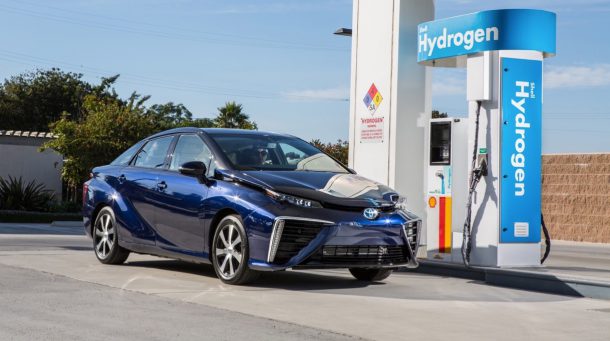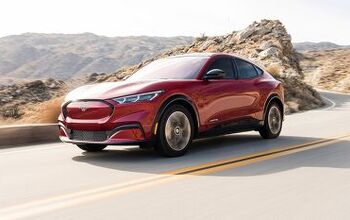Hydrogen-Fueled Driving is the Dream That Won't Die, and Ford Wants to Make It Cheaper

Hydrogen fuel cell vehicles have been in development for as long as hybrids, but while one of those technologies can be found in any Walgreens parking lot, the other still occupies a tiny micro-niche in the marketplace.
Besides the lack of refueling infrastructure, hydrogen-powered driving is hindered by the high cost of fuel cells. After receiving $6 million from the feds, Ford Motor Company and the Los Alamos National Laboratory hope to change that, the Detroit Free Press reports.
The grant, awarded by the U.S. Department of Energy, aims to spur development of cheaper fuel cells, which convert hydrogen and oxygen into electricity. Without a cost-effective production system, fuel cell vehicles will continue to be an ultra-low volume afterthought, hamstrung by their lack of competitive pricing.
This isn’t the first time Ford dipped its toe into the hydrogen vehicle realm. Prior to the recession, the automaker tested a small fleet of fuel cell-powered Focus vehicles. That demonstration program also saw support from the DOE.
Ford isn’t ruling out using the technology if it becomes cost-effective to use. In a statement, the automaker said, “The grant will help further our research efforts to develop next-generation technologies for our vehicles.”
As it stands, the flow of hydrogen vehicles into the U.S. market is like a tap that leaks a drop of water a few times a day. Less than 300 Toyota Mirai sedans found buyers as of July (according to Business Insider), though the automaker plans to cautiously ramp up production next year. The Hyundai Tucson fuel cell vehicle recently saw its first buyers in the U.S. and Canada, and Honda plan to market the Clarity later this year.
As of today, only 29 public hydrogen refueling stations exist in the U.S.

More by Steph Willems
Latest Car Reviews
Read moreLatest Product Reviews
Read moreRecent Comments
- Calrson Fan Jeff - Agree with what you said. I think currently an EV pick-up could work in a commercial/fleet application. As someone on this site stated, w/current tech. battery vehicles just do not scale well. EBFlex - No one wanted to hate the Cyber Truck more than me but I can't ignore all the new technology and innovative thinking that went into it. There is a lot I like about it. GM, Ford & Ram should incorporate some it's design cues into their ICE trucks.
- Michael S6 Very confusing if the move is permanent or temporary.
- Jrhurren Worked in Detroit 18 years, live 20 minutes away. Ren Cen is a gem, but a very terrible design inside. I’m surprised GM stuck it out as long as they did there.
- Carson D I thought that this was going to be a comparison of BFGoodrich's different truck tires.
- Tassos Jong-iL North Korea is saving pokemon cards and amibos to buy GM in 10 years, we hope.


































Comments
Join the conversation
At some point the insurance industry is likely to weigh in on FCV's. For example the idea of underground parking lots full of these things is scary.
A major analysis that typically isn't done is what I'll call "wellhead to tailpipe" How much energy does it take to get a fuel ( be it gasoline, electricity, hydrogen etc) from the place of production to the final use as transportation. In many cases it can be single digit efficiency! H2 efficiency depends on the type of fuel cell, each has it's advantages and disadvantages. For the PEM type (i.e. Ballard's fuel cell powered bus) the hydrogen in made by cracking natural gas, to give CO and H2. CO is a poison to a PEM cell, and has to be discarded, so right away you're throwing away half the fuel. SOFC cells can use CO as a fuel but they operate at red hot temperatures (typically 750-800C ) and it takes at least 4-5 hours to get them to temperature from cold, since the various materials inside them at brittle and have to be warmed slowly. Once hot they must be fed fuel contentiously to protect the cells from air which will destroy them. It's like leaving your car idling all the time you're not using it. I used to work at an R&D company building and developing fuel cells, and transportation is a very poor application for them. Continuous load, like base load for the electrical grid is what they are good at. Cars are better off as straight electric with batteries, or hybrids. Or like trolley buses years ago with overhead power supplied.